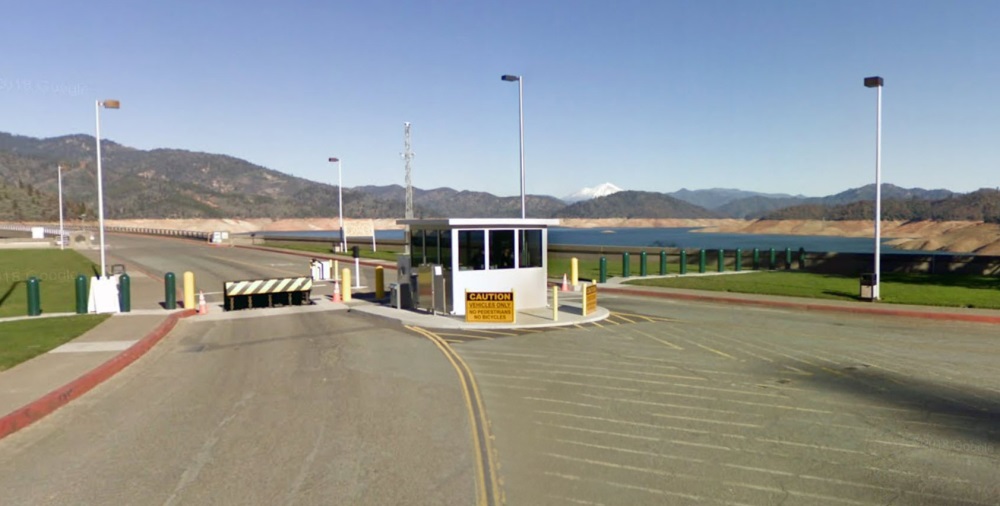A guard shack is a type of freestanding external guard booth. It’s usually the point of first contact when approaching a facility. Guard booths are often also called “checkpoints,” especially when they serve as access control at the border of a facility’s property.
Unlike most guard booths, which are typically located inside a building, a guard shack is outdoors. Guard shacks must be able to withstand a wide range of events. That includes potential attacks, like snipers, ramming attacks, explosives, and arson, in addition to the everyday wear and tear. Having a safe and secure guard shack is critical—and ballistic protection is the first line of defense.
What Is a Guard Shack’s Function?
A guard shack serves four main purposes. In order of importance, these are:
- Access Control: A guard shack’s first and most important task is access control. Guard shacks are located where everyone entering the facility or its grounds is vetted before being allowed entry.
- Surveillance and Monitoring: Security cameras and other monitoring tools should all route data back to the guard shack, both so security officers can raise the alarm at any suspicious activity and so they are not taken by surprise.
- Communications: The guard shack helps people in the organization talk to each other. It is both a hub for the security team, and a central dispatch for communication between the wider organization and security. It’s also a kind of “visitor center,” because it is usually the first point of contact between those trying to gain entry and the organization.
- Crime Prevention: Guard shacks can help deter crime by providing a visible security presence. They send a clear message that you are serious about safety and security—and that you can respond to threats.
Most guard shacks are equipped with ballistic protection to keep your security team safe as they perform these functions.
3 Key Considerations When Constructing or Retrofitting a Guard Shack
If you’re considering adding a ballistic guard booth to your facility or campus, there are four key considerations before beginning a guard shack construction or renovation project:
1. Understand What UL Level of Ballistic Protection You’ll Need
Bulletproof windows, doors, and walls ensure your security team is safe from bullets when they’re on the job. In recent years, glass-clad polycarbonate (GCP) has become the glazing of choice for guard shack windows. Bullet-resistant fiberglass panels reinforce guard shack walls.
UL Levels 3 through 5 are the standard level of protection for most guard shacks. We rarely equip government guard booths with anything rated lower than Level 5. Most clients are choosing to use bullet-resistant GCP for their guard shack windows. GCP is durable, offers some built-in resistance to blasts and forced entry, and allows for design flexibility. Because GCP is a laminated product, it comes with a wide range of options; there are many ways to customize GCP windows by adding tints or mirroring, low-E coatings, additional safety features, and more depending on your needs.
Speaking with an experienced ballistic expert can help you determine the right level of protection for your application.
2. A Guard Shack Is Only One Part of a Complete Security Plan
The guard shack is only one part of a security system. In most cases, it is a hub that links several parts of your security strategy: surveillance systems, communications systems, access control, emergency response, and any other systems your organization may have in place.
Your security system only works when all of its pieces fit tightly together. A ballistic guard shack can be an effective way to connect these systems. It can’t replace the function of other security systems. If you have questions about integrating your security systems into your ballistic guard shack, please don’t hesitate to contact TSS to learn how.
3. Consider Future Security Needs Now
Your security needs will change over time. For most organizations we work with, they need a higher level of security as time goes on.
For example, we recently upgraded guard shacks for a federal agency. Since the agency’s guard shacks were first built, targeted attacks have become more dangerous. The guns used in mass shootings had become more deadly; the frequency of attacks like explosives or vehicle ramming increased. All of these ballistic guard shacks had to be reengineered and retrofitted up to Level 8 standards—the highest level of protection commercially available.
If you’re concerned about future threat levels, our team can help you design a guard shack that meets your current and projected security needs.
Retrofitting or Build a Guard Shack: A Real-World Example
For example, we recently worked with the US Bureau of Reclamation to improve security at the guard shacks along the Shasta Dam.
The Shasta Dam is among the world’s largest dams. It forms Lake Shasta, a 1.5 trillion gallon reservoir, and drives the Shasta Power Plant. Together, Shasta Dam and Shasta Lake are among the biggest tourist destinations in California, attracting millions of visitors each year.
In 2022, the Bureau of Reclamation partnered with TSS to improve security at Shasta’s checkpoints. TSS removed the existing non-rated glass windows and designed ballistically-rated replacements that could work with the existing framing elements and glazing. After careful planning, we installed custom GCP windows with a mirrored interlayer, working with their general contractor to plan around other construction projects at the dam.
Today, the guard shacks at the Shasta Dam, such as the one in the header image of this article, have what they need to be safe and functional.
Create or Retrofit Your Ballistic Guard Shack with TSS
At TSS, we can guide you through your project from consultation to installation, and help you meet your unique security needs. Reach out today for a free quote on your custom ballistic project.

